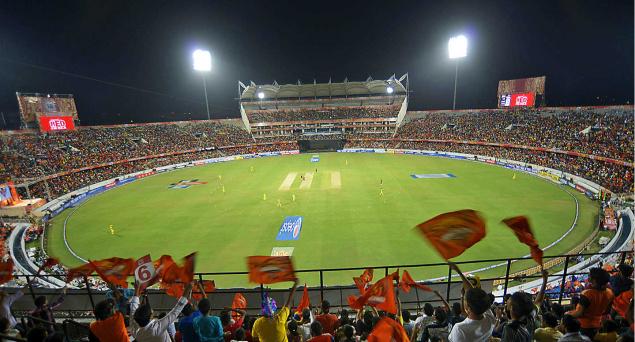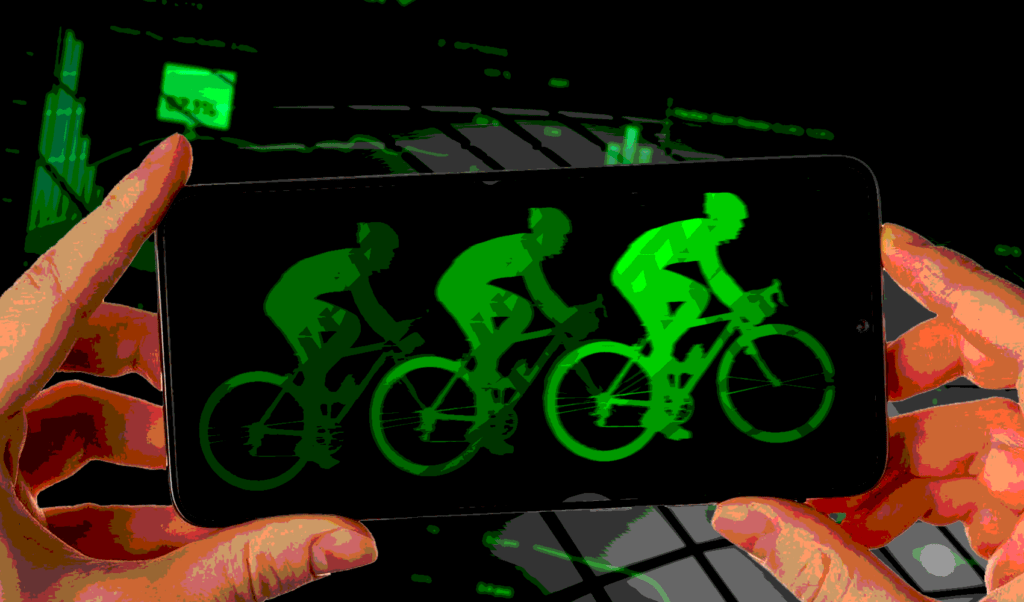In-stadium augmented reality can change the way fans watch sport — but is that what they want?
 Augmented reality technologies are making their way to stadiums in an attempt to enhance the fan experience. : Victoria Prymak, Unsplash Unsplash licence (https://unsplash.com/license)
Augmented reality technologies are making their way to stadiums in an attempt to enhance the fan experience. : Victoria Prymak, Unsplash Unsplash licence (https://unsplash.com/license)
In-stadium augmented reality can change the way fans watch sport — but is that what they want?
Professional sports are fighting harder than ever for the attention of the next generation. With TikTok, streaming services and interactive experiences like video games taking up more time of young people, some sporting bodies are looking to technology to enhance the fan experience.
A key technology that might help connect traditional sports to young people is augmented reality. Allowing spectators in stadiums the chance to have real-time overlays to offer a lot of intuitively appealing benefits: live statistics supplementing the on-field action, animated players and mascots, real-time 3D effects (such as team line-ups) embedded, face filters, or even virtual directions around the stadium facilities.
Leagues and teams are trying. National Football League teams such as the Carolina Panthers and Baltimore Ravens have introduced “mixed-reality” mascots, large virtual depictions of their namesake animals that made for spectacular viral footage. At the 2022 FIFA World Cup, fans in Qatar could download a FIFA+ app that could project an augmented reality overlay of team and player data, such as heatmaps, line-ups and statistics.
Sporting administrators are keen to wed augmented reality with the fan experience, but the enthusiasm hasn’t been fully reciprocated. Market research indicates that spectators are inclined to try out new technology offered in stadiums, but there’s also a lot of pushback.
The power of rebellious fans has been historically potent. American broadcaster Fox invested over US$2 million in the early 1990s to develop ‘FoxTrax’, an augmented reality-based technology to help ice hockey fans follow the puck during televised National Hockey Games. Despite the substantial innovation, the gimmick lasted two years, sunk by fan backlash.
In March 2022, the National Basketball Association and ESPN collaborated to make a 3D highlight reel of a real-life contest between the Dallas Mavericks and Brooklyn Nets. The pixelated blurry footage resembled a dated video game, and the “NBA CourtView” product hasn’t been seen since.
Resistance is multi-dimensional. Some are shy adopters, holding out until they see others doing it. Some will reject innovations no matter how promising the technology looks. The most disruptive will rebel against new technology in stadiums, discouraging others from taking it up and calling for a boycott to force their way back.
Anti-innovation sentiments among sports fans have their own unique drivers. On the surface, backlash against video assistant refereeing technology might seem puzzling — one would assume sports fans would welcome an innovation that reduces the prospect of an umpiring error that could influence the outcome of the game. But research has shown some fans disapprove of the technology, for it robs them of spirited, emotionally-driven debates over refereeing decisions with other fans in lieu of a robust, more objectively correct verdict.
A 2022 study of over 1,000 sports fans in Germany and the UK unearthed other concerns they had about the integration of in-stadium augmented reality technology. Some feared that integrating apps with the in-stadium experience could hurt the in-stadium atmosphere, distract fans from the live action on and off the pitch, and that using augmented reality is at odds with the identity of a ‘good’ or ‘sincere’ sports fan.
Worries that the experience of live sport is predicated on holistic fan buy-in echoes across other research on sports fans and use of technology: singing, clapping, cheering, supporting one’s team and engaging with nearby barrackers to create a community oriented around live action.
Part of fans’ trepidation to embrace a data-rich world of augmented reality is the risk of sterilising a pastime that is driven by emotion, for instance heated discussions among spectators might be cooled by the glut of statistics available in real-time. Surveyed fans tended to enjoy having emotionally charged conversations with friends and some expressed concern that the character of discussions would shift away from enjoyably speculative to objective and data-based with increased augmented reality integration.
There were other pragmatic concerns uncovered by research — some fear that using augmented reality technology in stadiums might be disruptive or prompt criticism from nearby spectators, while others worry about surrendering data and the security implications of using such apps.
Such trepidation does not necessarily mean sporting administrators are misguided for pushing ahead with augmented reality. The opportunities are vast and there have been widely lauded integrations, especially on television broadcasts.
ESPN’s pioneering virtual first down marker for NFL broadcasts have become ubiquitous in all coverage of the sport, while the NBA’s Los Angeles Clippers have launched an augmented reality-based ‘ClipperVision’ broadcast of their games that utilises technology to show live diagrams, shooting percentages and player details.
But research suggests adopters of augmented reality might need to carefully consider how it’s rolled out. Limitations could be placed on the initial rollout of augmented reality — for instance, statistics might only be available during breaks to avoid dampening live atmosphere during match play.
Sports capture a special alchemy for many supporters, blending analytic brilliance with athletic prowess with deep emotional connections. Finding a way to innovate without casting aside those romantic bonds is a challenge all forward-thinking administrators are staring down.
Sebastian Uhrich is Professor of Sport Business Administration at the German Sport University Cologne in Germany. His research focuses on understanding the psychology and behaviour of consumers, particularly in sports contexts.
Kim Uhlendorf is a PhD-Student at the German Sport University Cologne in Germany and a Research Fellow at the University of Cologne. Her research focuses on consumers’ interactions with and reactions to new technologies in digital marketing.
Ms Uhlendorf’s research was supported by the Internal Research Funds of the German Sport University Cologne under Grant L-11-10011-235-061000.
Originally published under Creative Commons by 360info™.











